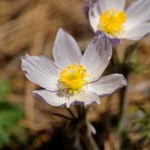Climate change is perhaps the most pernicious and least understood challenges facing humans today. It is a classic example of a system that is not only complex, it is complicated. The delays between human action, not only in causing changes, but in their correction as well, are long, sinuous, and loosely coupled. This makes understanding the system difficult. Imagine yourself taking a shower in a hotel room for the first time. You turn the water on and attempt to adjust the temperature. Its too hot, so you turn the temperature down. Nothing happens. You turn the lever toward “cold” some more. Nothing happens. You turn it more. Now its super cold! So you adjust the lever more toward the “hot” side again. Still too cold. You repeat these steps several times, and get frustrated. This is a simple system with a relatively short time delay. Now try to imagine a large system, with hundreds of variables and multiple delays of different lengths. Couple this with effects that occur someplace else. Now you can appreciate some of the difficulties in understanding climate change and trying to figure out what to do about it.
But what does climate change have to do with protected areas. Well, there are over 112,000 nationally designated protected areas in the world, according to the World Conservation Monitoring Center in Cambridge, UK. Each one of these was established with some implicit assumptions about the presence of vegetation and wildlife within it. As the climate changes, so does the vegetation, and the animals. The type and distribution of natural capital changes. As natural capital changes, the services provided by ecosystems constructed on that natural capital also changes. Now this is pretty significant shift, and it means that protected areas may no longer protect natural capital—and the related ecosystem services—that was originally intended. That natural capital may shift to places outside the protected areas, or, it may no longer exist.
The shifts in ecosystem-based services—the type, quantity and spatial and temporal distribution—affect people who depend upon those services for their survival. That is, US! Water may no longer come in the amounts or seasonal distribution we have come to expect. Genetic resources may be lost. Carbon storage may increase, or decline. The point is, humans depend on that natural capital for their very survival. Protected areas play a critical role in ensuring the sustainability of those services.
Now we have probably all heard about this before, and probably many times. But what can and should we do about it? We need to understand that we, as humans, must adapt. Adaptation means not only changing our behavior to reduce our impact, but adapting to shifts in services and the availability of the benefits coming from those services. One of those services we benefit from is wildlife populations and behavior. We benefit by the tourism that is developed around those populations, through the spending non-locals make in the local area, creating economic opportunity. Tourism, through the development of not only income, but also of skills, can help a community build resiliency, if it (tourism) is carefully managed.
UNESCO’s World Heritage Center has been particularly concerned about the potential of a changing climate on the sites inscribed on the List of World Heritage. These sites protect the “outstanding universal value” – why the site is inscribed—of a place to all of humanity. Climate change may threaten that value. See http://whc.unesco.org/en/climatechange for further information on activities of the Center.
Of course, working at the international level to secure changes that reduce impacts is also important. International cooperation and collaboration is essential to ensure that nations work together. While many people were disappointed in the Copenhagen conference, it does establish a foundation for future agreements on emissions. For one very positive assessment of this foundation, you might want to visit http://www.grist.org/article/2009-12-20-a-preliminary-assessment-of-the-copenhagen-accord/.
So, we need a concerted effort not only to understand climate change and its causes, but also effects on protected areas, the values and natural capital they contain, and the ecosystem services they provide. We need an organized effort to discuss these effects.




